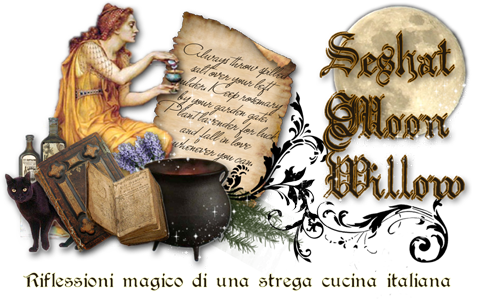Lavender (Lavandula angustifolia, or Lavandula officinalis)
When some people hear the word Lavender they may associate it with its use in soaps, shampoos and sachets because of its lovely aroma. The name comes from the Latin root lavare, which means "to wash." It is quite possible that Lavender earned its name because of its frequency in baths to purify the body and spirit among other things. Over the course of years, research has shown that when its scent is inhaled it produces a calming, soothing and somewhat sedative affect.
Lavender is native to the mountainous zones of the Mediterranean; however, today it flourishes throughout southern Europe Australia and the United States. Lavender is a heavily branched short shrub that grows to a height of roughly 60 centimeters (about 24 inches). Its broad rootstock bears woody branches with upright, rod-like, leafy, green shoots. The flowers are arranged in spirals of 6 - 10 blossoms, forming interrupted spikes above the foliage. The oil in lavender's small, blue-violet flowers gives the herb its fragrant scent. The essential oil is extracted from the fresh flowers and used for medicinal purposes, aromatherapy and magickal uses.
For centuries Lavender has been used as an herbal remedy and does appear to have antiseptic, anti-bacterial, anti-fungal, anti-inflammatory, anti-convulsive, and last but certainly not least - anti-depressant properties.
Lavender is believed to be beneficial for a multitude of problems if taken internally. It is reported to help with stress, anxiety, exhaustion, irritability, headaches, migraines, insomnia, depression, colds, digestion, flatulence, upset stomach, liver and gallbladder problems, nervousness, loss of appetite and as a breath freshener and mouthwash.
For issues such as relaxation and sleep, easing depression and reducing headache pain, inhaling the essential oil has been reported to work as well as some narcotics do. Who wouldn’t want to use a natural remedy such as Lavender over a possibly addictive narcotic? Simply boil 2 cups of water and add 2 drops of the essential oil and inhale the steam.
In regards to the internal usage you can find commercial preparations in the form of teas, infusions, tinctures, dried flowers, and oil. As far as using the essential oil internally, unless you have a home still and the knowledge of the process to extract the essential oil, it is usually advised by most vendors to take in very small doses as it may cause you to become very nauseous. My first rule of thumb when using essential oils is to always follow the manufacturer’s recommendations. On the other hand, the tea and dried flowers are wonderful for internal usage and I have included a recipe below that I hope you will try.
Lavender oil is one of the safest essential oils and can be used full-strength on the skin. It can be applied directly to cuts, scrapes, wounds, burns, bee, wasp and insect stings, rashes, muscle aches, rheumatism, arthritis, cold sores, canker sores, blisters, bruises, athlete’s foot and directly in the temples for headaches and migraine pain.
Magickal Properties:
GENDER : Masculine.
PLANET : Mercury.
ELEMENT : Air.
POWERS : Love, Protection, Sleep, Chastity, Longevity, Purification, Happiness, Peace, Protection, and Sleep
PLANET : Mercury.
ELEMENT : Air.
POWERS : Love, Protection, Sleep, Chastity, Longevity, Purification, Happiness, Peace, Protection, and Sleep
Because of its lovely scent, Lavender has been used for thousands of years in love spells and spells for attracting money. By placing Lavender flowers in a sachet or amulet and carried on your person, one might be able to attract spirits and also love, peace and good health. Another way to attract love is to take the fresh flowers of the Lavender and rub them into the clothing. Lavender is very useful for spell work and rituals, simply take the dried Lavender stalks and burn them just as you would incense. You can also use them in spells to attract money, love, protection and success. The flowers as well as the stalks can be burned, but they must first be dried. Should you desire to use Lavender for sleep divination either place a lavender sachet or lavender sprigs under your pillow before bed time while focusing your mind on your desire. If during your dream you dream of anything related to your wish, you will get what you desire. For peaceful sleep place a few drops of essential oil in a diffuser before bed.
The following are recommended doses for lavender:
- Internal use: Tea: 1 to 2 tsp whole herb per cup of water. Allow to steep for 3-5 minutes or even up to 15 minutes. Soothes tension and helps insomnia.
- External use: inhalation: dried flowers in 2 to 3 cups of boiling water; inhale vapors for headache, depression, or insomnia.
- Topical application: lavender water can be safely applied. Pour 3/4 cups boiling water over 3 Tablespoons dried lavender flowers or buds. Let cool and strain. Can be sprinkled on your pillow for a good night's sleep, or applied to skin to cool, soothe and refresh.
- Lavender Bath and Oatmeal: place into a muslin bag or multiple thicknesses of cheesecloth, two tablespoons each of lavender buds or flowers, and freshly ground oatmeal (whirl in blender). Tie tightly with a long piece of string or ribbon. Attach the bag to the bathtub spigot, so the bag hangs below the water level. While bathing, rub the bag on the skin to soothe dry, itchy, achy spots. Very relaxing!
Lavender Ice Tea Recipe
2 tbsp Lavender flowers (1 tbsp dry)
1 tbsp Lemon balm (1 tsp dry or one lemon slice)
1 tbsp Mint (1 tsp dry, applemint is best but spearmint works also)
3 tbsp Honey
Pour six cups boiling water on herbs and steep for ten to fifteen minutes. Cool to room temperature. Add lemon slice after cooling if you’re using it instead of the lemon balm. Add honey and stir. Add crushed ice. Enjoy!
If you would like to learn how to make sachets of your own, please check out this link. http://insightfulnana.com/fun-times/crafts/making-lavender-sachet-gifts/html



















































No comments:
Post a Comment